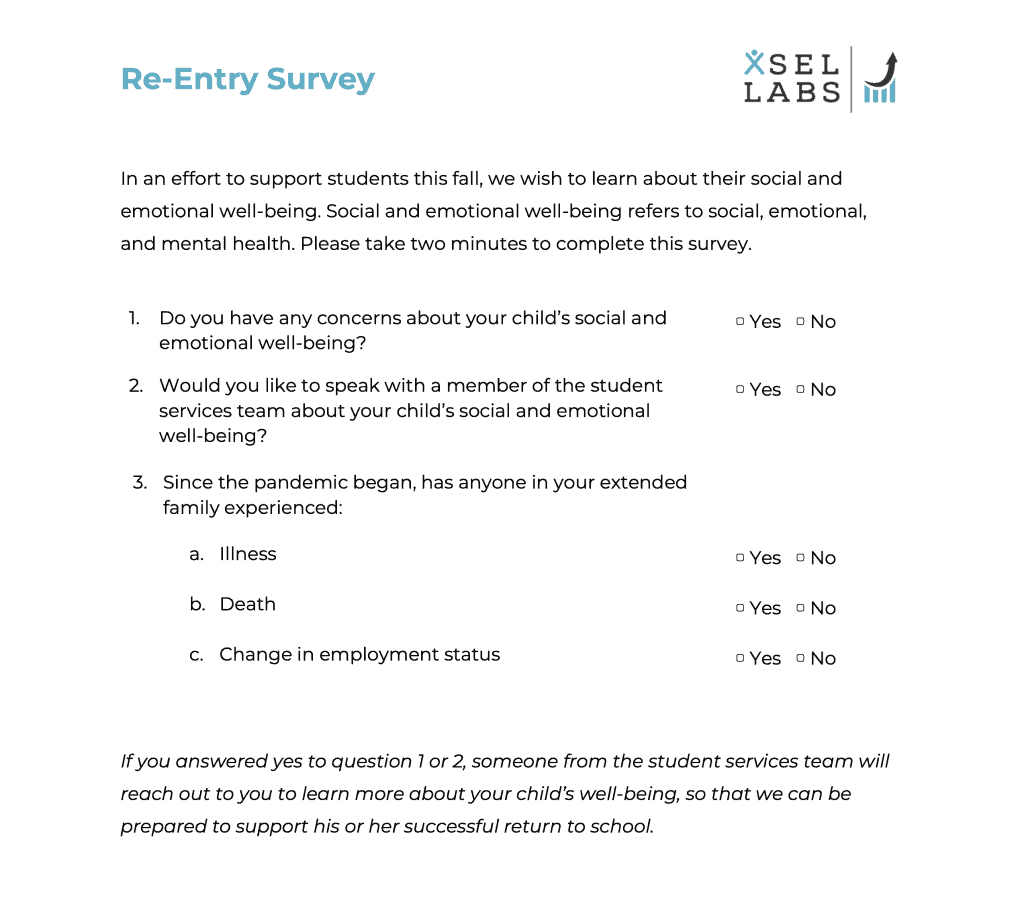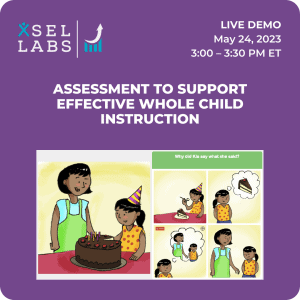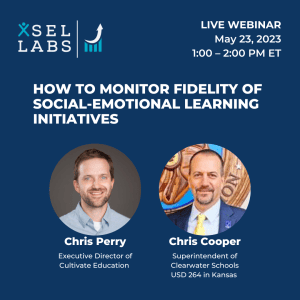In these uncertain times, one thing is for sure: Children and families are under stress. Because of this, educators are talking a lot about children’s social and emotional well-being at school re-entry. What social and emotional burdens will students carry to school with them? How available will they be to learn? Who will need extra support? Where should educators begin in their work with students? How do we efficiently assess student social and emotional well-being in a way that supports educational practice?
Social and Emotional Well-Being: Definition A and Definition B
In my discussions with educators, it’s become clear that when educators talk about student social and emotional well-being, they are talking about two different things, each with its own definition and assessment implications.
Definition A: Student Mental Health
First, definition A: when educators talk about social and emotional well-being, they are talking about student mental health, defined as students’ emotional response to traumatic experiences, as reflected in anxiety and other symptoms of distress. Essentially, they are referring to social and emotional burden or pathology.
Definition B: Student Social and Emotional Competence
Second, definition B: when educators talk about social and emotional well-being, they are talking about students’ level of social and emotional competence. These are competencies that CASEL describes such as self-awareness, self-management, social awareness, relationship skills, and responsible decision-making. These are competencies students need to interact effectively, to make and deepen relationships, to weather challenges, and to succeed in school and life.
Now, these definitions of social and emotional well-being are distinct, but related. For example, we know that the better developed are students’ social and emotional competence, the more resilient they are in the face of stressors and the better their mental health.
Most educators are highly concerned about definition A, which is about putting out proverbial fires. At the same time, it’s critical to keep focused on the long game, which involves not just identifying and addressing crises, but teaching the competencies that, over the long haul, equip children to cope with adversity and succeed as students and later as adults. Definition B is part of the discussion, but not as prominent as it should be.
Assessing Social and Emotional Well-Being (A and B)
If you want to get a handle on student social and emotional well-being in the fall, you’d use very different assessment approaches to measure social and emotional well-being as mental health and to measure social and emotional well-being as level of competence.
So which kind of social and emotional well-being should educators assess? Because I’m a cake-and-eat-it-too kind of person, I would suggest that most school districts would do well to measure both.
Assessing Social and Emotional Well-Being (A)
If you want efficiently to get a handle on the mental health burden students bring to school, this is a question of screening. Understandably, many educators and SEL advocates are nervous about screening because they are concerned that students might be stigmatized by a brief and inaccurate assessment. There is a simple way to achieve the goal of identifying students who might benefit from follow-up while mitigating the risk of unintended negative consequences.
Specifically, a simple and informative method is to ask all parents whether (1) they have any concerns about their children’s social and emotional wellbeing or mental health or (2) if they would like to speak with a member of the student services team to discuss their student’s social and emotional well-being. If the answer to either of these questions is “yes,” a qualified member of the team should reach out to the parent to learn more and conduct more assessment as needed.
It may also be helpful to ask whether anyone in the immediate or extended family experienced (a) illness, (b) death, or (c) negative impact on parent employment. This can quickly help describe what events might be affecting the well-being of students. Because these are sensitive questions, it will be helpful to let parents know they are optional.
Download School Re-Entry Survey
Assessing Social and Emotional Well-Being (B)
To get a handle on the social and emotional competencies you intend to nurture calls for formative assessment and individualized instruction. This involves assessing student social and emotional competencies early in the year and using the data to tailor educators’ use of SEL resources such as evidence-based programs to build on identified strengths and address identified needs and to measure student progress.
How do you do this? xSEL Labs offers evidence-based social and emotional competence assessments that can be used to benchmark student competence, focus instruction on the skills that matter most, and measure progress in response to instruction.
A Third Kind of Assessment
The conditions of learning will also be acutely important for students’ successful re-entry to school in the time of the pandemic. Particularly important are how safe students feel, how positive their connections with adults and peers, and how much they are supported as learners. The more students feel safe, feel they belong, and feel supported as learners, the more they will be able to participate in school constructively and to learn.
This can be assessed with climate surveys assessing student perceptions of these dimensions of the climate. xSEL Labs offers a brief climate survey for K to 6 assessing student perceptions of the conditions of learning. Educators can use data from these assessments to take actions that make school safer, more connected, and more supportive of learning.
To Assess or Not to Assess? That is the Question
There are a lot of competing demands on educators’ time, attention, and constrained financial resources. So it’s fair to ask, is it worth it to assess mental health, social and emotional competence, and climate? I would argue that if you don’t take the measure of these key factors, it will take longer to get students settled into learning, and students have already lost a lot of time to this pandemic. Can you afford to assess? The better question is, can you afford not to?




